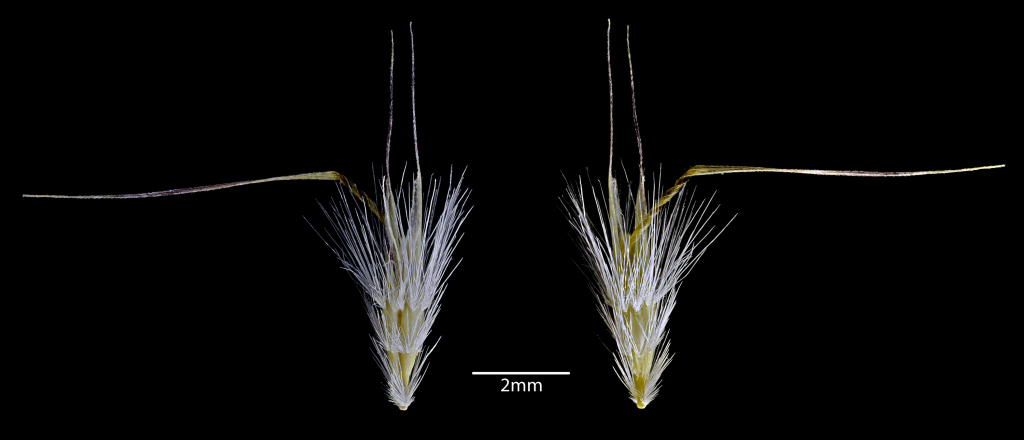Rytidosperma erianthum
(Lindl.) Connor & EdgarTufted perennial. Culms to 70 cm high. Leaves usually pilose with tubercle-based hairs; blade fine, inrolled or rarely almost flat, to 25 cm long and usually less than 1 mm wide. Panicle ovate, compact or loose, 2–7 cm long. Spikelets rarely purplish, 4–8-flowered; glumes subequal, acuminate, 11–19 mm long; lemma rather broad, 3–4 mm long, with 2 rows of hairs, the lower c. 1 mm above the callus tuft, and virtually reaching the dense upper ring, the hairs of which normally exceed the twisted part of the central awn; lateral lobes erect or slightly spreading, 7–11 mm long, rather abruptly tapered to the setae which are about as long as or longer than the flat part; central awn exceeding lateral lobes by 3–8 mm; palea obovate, firm, the margin conspicuously ciliate, exceeding sinus by about 1 mm. Flowers Sep.–Dec.
LoM, MuM, Wim, GleP, VVP, VRiv, MuF, GipP, OtP, WaP, Gold, CVU, GGr, DunT, NIS, EGL, EGU, HSF, HNF, OtR, MonT, VAlp. Also SA, NSW, ACT. Except in the north-west and far east, wide-spread and common, chiefly in dry areas, but rarely ascending to the subalps as at Bennisons Plain near Licola.
Walsh, N.G. (1994). Poaceae. In: Walsh, N.G.; Entwisle, T.J., Flora of Victoria Vol. 2, Ferns and Allied Plants, Conifers and Monocotyledons, pp. 356–627. Inkata Press, Melbourne.
 Spinning
Spinning


